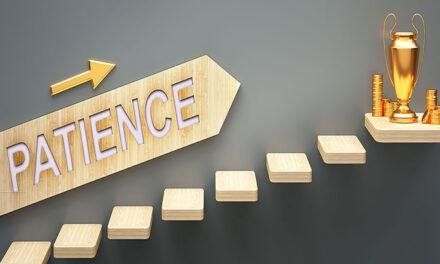The principle behind the 80-20 rule is that 80% of the results you achieve are from 20% of your efforts.
Think about that for a minute. You work hard on a project. Let’s say that the project is starting a business. According to the 80-20 rule, only 20% of your effort was viable. Only 20% of working hours and hours, days and days on your business, was productive enough to produce results.
When I heard about the 80-20 rule, it intrigued me. I wanted to know more. I wanted to know if I was actually wasting my time, which, to some degree, we all do.
But, I really wanted to know if I am only getting 20% results from my effort.
A few questions comes to mind when I consider the 80-20 rule.
- Am I working too hard?
- How do I know what to work on if only 20% of my effort is viable?
- How do I get the most value out of the 20% effort?
The 80-20 Rule Or Pareto principle isn’t new
If you are or were a business or economic student then you most likely know about the 80/20 rule. Still, I’m sure it’s probably new to most of you as it is to me.
First, let me tell you more about this principle and why it’s also called the 80-20 rule.
Vilfredo Federico Damaso Pareto. I am so sure I am not pronouncing his name correctly. Regardless, he was an Italian economist and philosopher of the 19th century. In 1895, he devised the Pareto principle base on his observation of pea plants.
When I think about his pea plant and how they propagate, I am imagining survival of the fittest. I really think that what he saw was the stronger of the pods surviving. I’m sure we’ve all heard the saying only the strong survive. That a subject for another podcast.
No doubt there are other events that happened between his garden discovery and him eventually realizing that 80% of the wealth in Italy belongs to 20% of the population. I guess his observation of the pea plant production pattern made him notice the wealth disparity in his country.
Wikipedia describes his legacy as an economist as profound, and if you choose to look further into the person who is responsible for what microeconomics are today, then you will see why his work is described as profound.
The 80-20 rule was born out of Mr Pareto’s observation. Advance forward to this century and the 80/20 rule translates into personal efficiency and how you manage your life and your time.
The purpose of the 80-20 rule
To get you to identify where and how to spend most of your time and energy. Using this rule, you would identify the goals you want to achieve and create specific task to accomplish them.
This is how you would know whether you are working too hard. When you apply the rule. Here is how.
- Examine all the tasks related to the goal you are trying to achieve and determine which one will produce the most results for what you want to accomplish.
- The next step is to deliberate and analyze which tasks you need to either remove or delegate because the end-result won’t contribute to your overall aim.
- The third and final step is to plan. This type of planning is not the typical one, though. When you plan, you are comparing. Time and resources vs. task priority.
The 80-20 rule forces you to ask and answer questions you would otherwise not consider. For instance, did you ever think that perhaps spending your time entering names in that spreadsheet is not effective if you are trying to grow your business? It’s not to say the database isn’t important, but that you, the business owner, should work on what will help your business success become feasible.
How to get the most out of your 20% Effort
Getting the most out of your 20% effort requires analyzing your priorities and your results. It also involves determine what part of that 80% you can let go of by either delegating, rethinking, or abandoning. That’s part 3 of applying the rule.
There is another step you can take to ensure your 20% effort happens. You can use the 80-20 rule to set your goals.
While still setting smart goals, you can take your objectives a step further by taking another step and applying the 80-20 structure.
Using the 80-20 rule, you would then identify the roadblocks or what stands in the way of your priorities. The goal is to clarify the objectives and the end-result.
Applying the 80-20 structure to your goals not only ensures you achieve that 20% result, but it also makes it easier to focus on what’s important, which leads to faster results.
It’s not just for business
It is easy to see how the 80-20 rule can benefit any business, big or small. You can also incorporate it into your personal life as well. It starts by asking key questions, keeping the 80-20 rule in mind.
Your habits – Is at least 20% of your habits responsible for 80% of value in your life
Your personal goals – Will 20% of the personal goals you focus on achieve at least 80% of the results you want?
Episode Highlights
- The history behind the orgins of the Pareto Principle.
- Achieving personal effeciency with this principle.
- Identifying where and how to spend your time and energy
- Three rules for applying the rule.
- Seeing how you may be working too hard.
- The rule forces you to ask and answer questions you otherwise wouldn’t ask and answer.
- The shows how to rethink, delegate, or abandon tasks.
- The rule is not a simple concept to follow.
Episode at a glance
- 0:05 – Principle Behind the 80/20 Rule
- 0:45 – Why This Rule Intrigues Me
- 2:40 – The Pareto Principle
- 3:15 – The Pea Plant & How It Relates To The 80/20 Rule
- 4:50 – Personal Efficiency
- 5:09 – The 80-20 Rule Formula
- 5:15 – Another Standpoint
- 5:52 – Using The Rule To Determine If You Are Working Too Hard
- 6:20 – The Three Step Process
- 9:05 – Ask & Answer Question You wouldn’t Consider
- 9:50 – Deligate, Rethink, Abandon
- 10:10 – Take Your Goals To The Next Level
- 11:05 – Questions For Applying The 80-20 Rule To Your Personal Life
- 11:50 – Why The 80-20 Rule Is Not Simple To Incorporate
Your Thoughts & Support
If you enjoy this episode or find it helpful, please share the podcast with family and friends and leave us a review on which ever medium you are using to listen to your podcasts.
Also, if you have a topic you want to hear about on Evolving Life? contact me.
Share your Apple Podcast review here. To access the review page, click on the link listen on Apple Podcast. Once Apple Podcast opens, click on Evolving Life under shows. Scroll to the bottom of the page and you will see the option to write a review.
Episode Reflection
You can only grow if you are willing to feel awkward and uncomfortable when you try something new. – Brian Tracey








